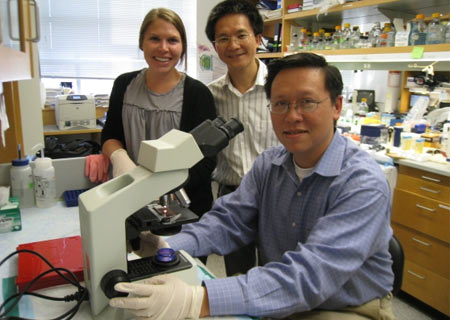Scientists from UCLA suggest a new approach to treat Huntington’s disease which is believed to be a devastating disorder. The experts seem to have recognized a molecular switch that could probably help in the prevention of Huntington’s disease in mice.
The investigators are of the opinion that this finding may open up a new avenue in the treatment of the genetic disorder. The condition is known to lead to untimely death is as little as 10 years. It seems to affect one out of every 10,000 Americans and progressively deprives patients of their ability to walk, speak, think clearly and swallow.
Interestingly individuals who inherit the disorder don’t seem to show symptoms until mid-life. This is probably when many have had children and unknowingly passed on the disease. Presently, the disorder has no effective treatment that may prevent its onset or even slow its progression.
The disease is known to be caused by a mutation in the polyglutamine (polyQ) region of a very large protein called huntingtin. The main challenge in analyzing the disorder is seemingly the presence of huntingtin everywhere in the body. This probably makes it ambiguous to understand the mutant protein’s function and mechanism.
“It’s unclear how the mutant protein causes age-related and progressive loss of brain cells in patients with Huntington’s disease,” noted senior study author X. William Yang, associate professor of psychiatry and biobehavioral sciences at the Semel Institute of Neuroscience and Human Behavior at UCLA. “We explored whether regions of the protein besides the polyQ mutation play a role in the development of the disorder.”
The study’s collaborators Joan Steffan and Leslie Thompson, of the University of California, Irvine, demonstrated that it was possible to modify two amino acids near the beginning of the huntingtin protein. They revealed that this alteration could be done by a chemical process called phosphorylation. The process is one used by cells to control protein function post making of the proteins.
In order to test if phosphorylation could indeed influence Huntington’s disease in a living animal, Yang’s laboratory created two mouse models. These were designed to carry the polyQ HD mutation and altered the two amino acids in two different ways. While one was to mimic phosphorylation, the other prevented it. Analysis revealed that prevention of phosphorylation resulted in the mice developing symptoms suggestive of Huntington’s disease in humans. Contrarily imitating the process did not seem to cause the disorder.
“Our study identified a critical molecular switch which lies next to the polyQ mutation in the huntingtin protein,” Yang said. “We were surprised to find that subtle modification of only two serine residues in this very large protein can prevent the onset of disease. This finding suggests an exciting new avenue to develop therapeutics for Huntington’s disease.”
The Hereditary Disease Foundation and National Institute of Neurological Disorders and Stroke funded this study.
The study features in the Dec. 24 edition of the journal Neuron.

